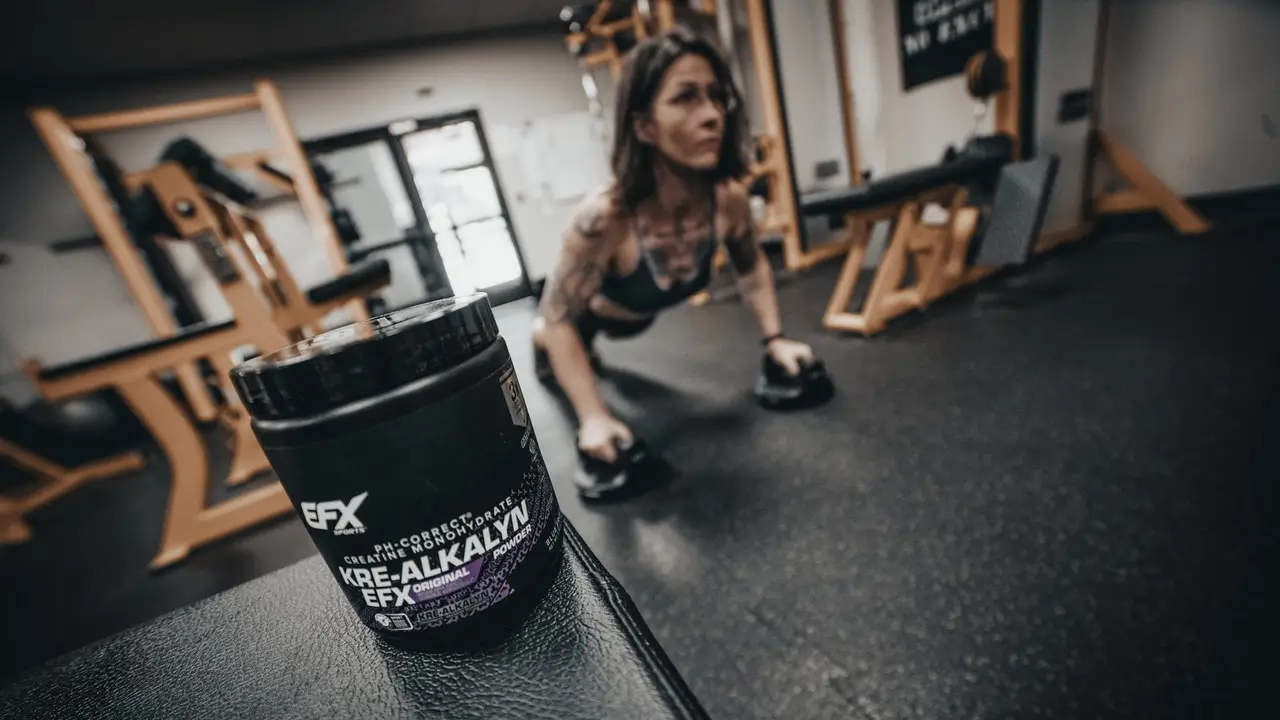
If you’ve been around the gym scene, you’ve heard about creatine—the gold standard for boosting muscle strength and power. But with popularity comes misinformation.
In this Creatine Myths Debunked for Athletes guide, we dismantle the top 5 falsehoods and deliver the science-backed truth every lifter needs.
Before we discuss the myths, let’s clarify the basics. Creatine is made in the body, mainly in the liver and kidneys, by combining three amino acids: Glycine, Arginine, and Methionine. Chemically, it is called “a-methyl-guanidinoacetic acid” (C4H9N3O2).
Creatine is a naturally occurring compound in small amounts in foods like meat and fish. It’s crucial in energy production, particularly during high-intensity, short-duration activities like sprinting or weightlifting.1
When you take creatine as a supplement, it increases the phosphocreatine stores in your muscles. This helps your body produce more ATP (adenosine triphosphate), which is the primary energy currency of your cells. More ATP means more energy for intense workouts, potentially increasing muscle strength and power.2
Now, let’s bust some myths!
This is a big one, folks. You might have heard that creatine isn’t soluble and needs to be chemically altered to be effective. Well, that’s not entirely accurate.
The Truth: Creatine monohydrate, the most common and studied form of creatine, is soluble in water. However, its solubility is limited to some degree. At room temperature, about 14 grams of creatine monohydrate can dissolve in 1 liter of water. But that’s more than enough for the typical serving most athletes use.3
The confusion might stem from the fact that creatine doesn’t dissolve instantly when mixed with water. It takes a bit of stirring and time. But rest assured, it does dissolve, and your body can absorb it just fine without any chemical alterations. Research states, “…but the solubility has no influence on tissue uptake.”4
Here’s where things get interesting. Some claim it stays stable indefinitely once you mix creatine with water. But is that really the case?
The Truth: Creatine’s stability in solution does matter, and it’s not as stable as some might think. According to respected publications like the Merck Index, creatine is an unstable compound in aqueous solutions. When mixed with water, creatine begins to break down into creatinine, which doesn’t have the same benefits for muscle performance.5
This breakdown process, called cyclization, happens slowly at room temperature but accelerates in warm conditions or over time. To ensure maximum effectiveness, avoid preparing creatine hours in advance. Mix it right before drinking, mainly if you’re not using a product like Kre-Alkalyn®.6
You’ve probably heard about “loading” creatine – taking high doses for the first week to saturate your muscles quickly. But is this really necessary?
The Truth: While creatine loading can saturate your muscles faster, it’s not essential for long-term benefits. A typical loading protocol for standard creatine involves taking 20 grams daily for 5-7 days, followed by a maintenance dose of 3-5 grams daily.
However, research shows you can achieve the same muscle saturation by consistently taking 3-5 grams daily. It takes a bit longer (about 3-4 weeks).7 So, if you’re patient and want to avoid potential side effects like bloating that can come with loading, the lower daily dose works just fine.
Some folks swear by cycling creatine – taking it for a few weeks, then stopping for a while before starting again. The idea is to prevent your body from reducing its natural creatine production. But is there any truth to this?
The Truth: No scientific evidence supports the need to cycle creatine. Your body’s creatine production doesn’t stop when you supplement with it. Studies have shown that long-term creatine supplementation (up to 5 years) is safe and effective without cycling.8
The confusion might come from confusing creatine with other supplements or even anabolic steroids, which do require cycling. Creatine, however, can be taken continuously to maintain elevated muscle creatine levels and reap its benefits.
This myth might keep some athletes from trying creatine, thinking it’s only for those looking to bulk up. But is that really the case?
The Truth: While creatine is popular among bodybuilders, its benefits extend to many athletes. Creatine can enhance performance in any sport that involves high-intensity, short-duration activities.9
This includes:
Even endurance athletes might benefit from creatine during high-intensity intervals or strength training sessions that complement their endurance work.10
With so many forms of creatine on the market, you might think there’s something better than good old creatine monohydrate. Let’s set the record straight.
The Truth: Creatine monohydrate is not just the original form of supplemental creatine—it’s still the gold standard. Here’s why:
Given these facts, creatine monohydrate remains the most cost-effective, well-researched, and reliable form of creatine for athletes. While other forms aren’t necessarily bad, they often come with a higher price tag without proven superior benefits.
Creatine is a well-researched supplement with proven benefits for muscle strength and power. By understanding the truth behind these common myths, you can make more informed decisions about your supplementation strategy.
Remember:
As with any supplement, it’s always a good idea to consult a healthcare professional or a sports nutritionist before adding creatine to your regimen. They can help you determine the best approach based on your individual needs and goals.
Stay strong, stay informed, and keep crushing those workouts!
Great info. Thanks!